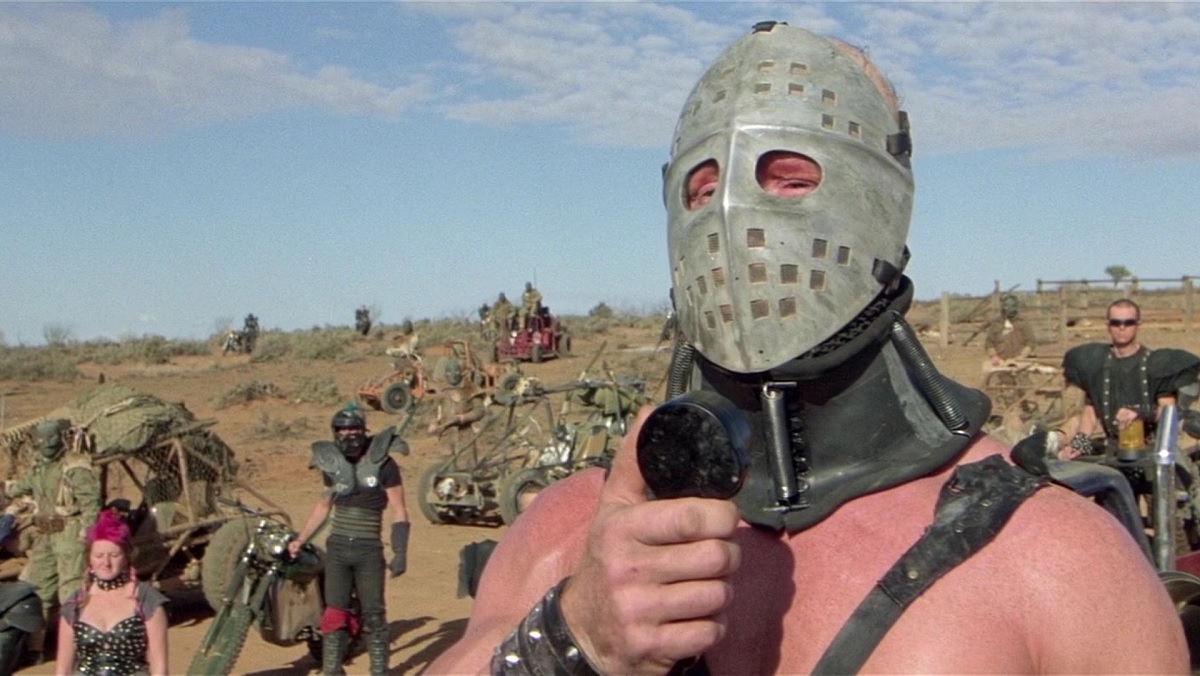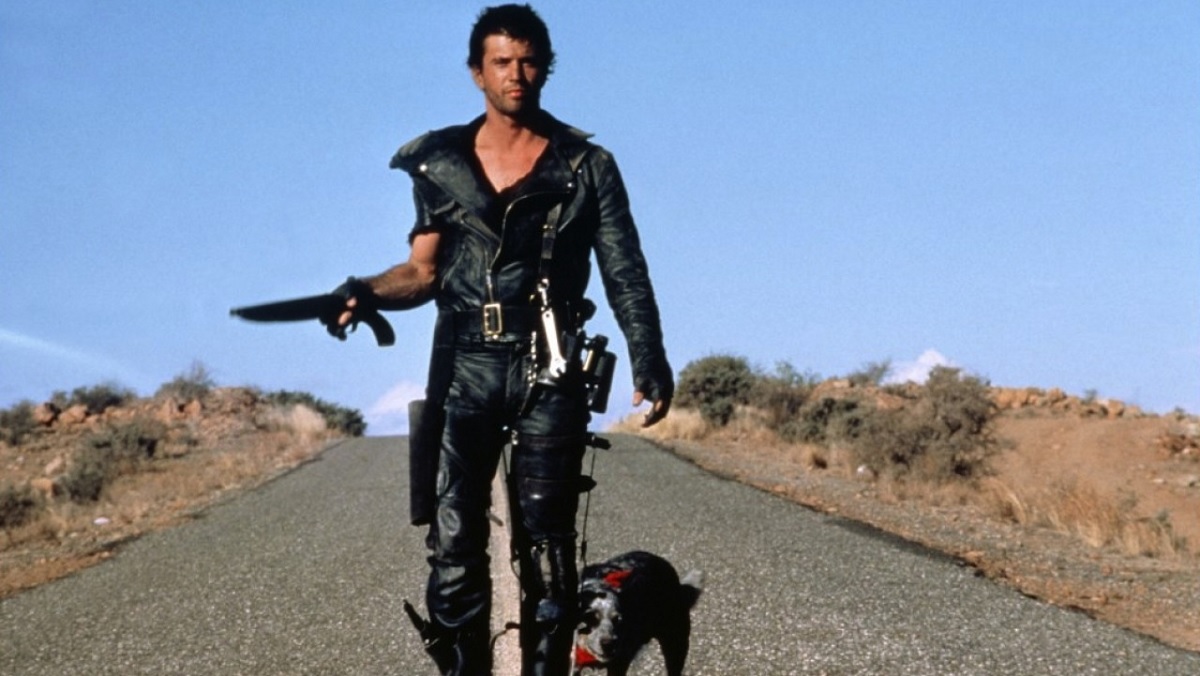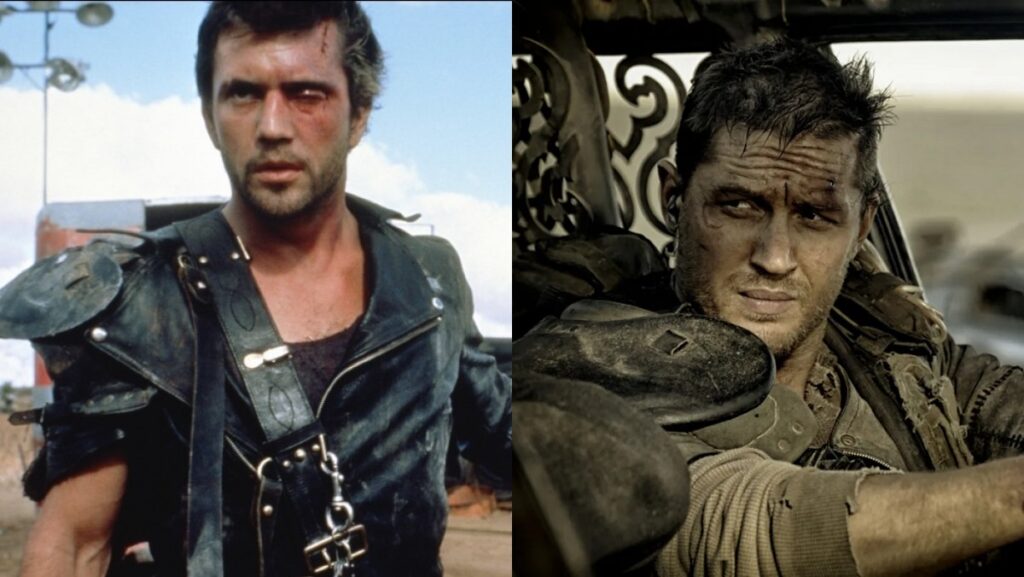For over 30 years, whenever anyone talked about a “Mad Max aesthetic,” what they really meant was “make it like The Road Warrior (a.k.a. Mad Max 2).” The 1982 movie really only has a tangential relationship to the 1979 original Mad Max. That one was really more of a cop in a lawless town movie. Cars and car action certainly featured heavily. The setting was a vaguely near-future dystopia, but it was a recognizable world. The Road Warrior, on the other hand, took the action to the post-apocalypse; convoys of suped-up cars and trucks doing battle in a desert world in need of water and gasoline. It led to roughly nine million rip-offs in the years since. So why, then, does The Road Warrior itself feel so passé these days? Has Mad Max: Fury Road made The Road Warrior irrelevant?
The basic story of The Road Warrior is effectively the same as Fury Road: Max Rockatansky, on his own looking for gas in the desert. Through happenstance and misfortune, Max ends up helping a small group of freedom fighters against a massive armada of leather-clad mutant freaks. Without his trademark car, Max drives a big rig, around which many high-speed stunts and deaths take place. Ultimately, Max and the group are successful and defeat the big bad. Though he could join them in peace, Max decides to continue wandering.
These are, of course, the mere broad strokes of a story which both movies share. I would like to point out, like the original Mad Max is a cop movie, the third entry, 1985’s Max Max Beyond Thunderdome, is a completely different kind of post-apocalyptic adventure. And like the original, Thunderdome was also not the basis for many rip-off exploitation movies. If you look up movies (usually either low-budget American or Italian efforts) from the early-’80s with a post-apocalyptic bent, almost all of them owe a major debt to The Road Warrior.

And why shouldn’t that be the touchstone? The Road Warrior created a whole vibe. It’s a pretty preposterous reality: the world has fallen apart but survivors of nuclear war spend their time building fancy hot rods. It gave us a well-spoken monster of a bad guy in the Lord Humongous, a body building wearing naught but leather straps and a hockey mask. Bullets are coveted, so arrows, harpoons, and flying blades become the main weapons. At the center is an amoral wanderer who ends up backing into doing the right thing.
Director George Miller made his version of the future feel real even if it doesn’t seem likely. Bases, compounds, high-speed raiding machines, and vile wastelanders. Filming in Australia, where deserts are plentiful, helped with this realism. The movie ends with a massive chase with a big rig that never stops driving while action scenes takes place on and around it. It’s one of the most exhilarating, frenetic, and explosive finales you could hope for. Its relatively low budget never once limited the scope of the filmmaking. It’s a triumph.

And yet. When you watch The Road Warrior, again or for the first time, after seeing Fury Road, it feels…lesser. It’s slower, less frenetic, and smaller than it once appeared. Rather than a huge highway chase finale, Fury Road does it from beginning to end. It has even less plot and somehow tons more at the same time. Every character is memorable, not just Max. If anything, as many have pointed out, Max is the least engaging member of the case. Modern technology heightened the things Miller did in the ’80s, elevated them, took them from epic to downright operatic.
The world of the wasteland, though more preposterous, feels even more real. Three cities populate the area: Gastown, the Bullet Farm, and the Citadel. Each provides the population with one of the pillars of post-apocalyptic life: guzzoline, bullets, and water. The effects of nuclear war are more apparent, in the “half-life war boys” who do the bidding of the even more hideous Immortan Joe. The war parties have even more ridiculous vehicles; one of them even has a guy chained up who plays electric guitar to amp everybody up. The rig is larger, more action takes place in and on it.

Now, is it The Road Warrior‘s fault that 34 years later, its writer-director would use the same premise to make a literal masterpiece of modern cinema? No, of course not. But it also doesn’t do it any favors. The Road Warrior went from the clear best entry in a trilogy to the second best in a tetrology. But at least the original Mad Max and Beyond Thunderdome are different enough to be enjoyed for different reasons. The Road Warrior‘s biggest failure is that it just isn’t Fury Road.
So while The Road Warrior is still an amazing piece of ’80s action filmmaking, and a hugely influential one, it’s no longer anything more than that. When people think of “Mad Max aesthetic,” now it’s all Fury Road. It had a good run as the best post-apocalyptic car movie of all time, but The Road Warrior is now neither shiny nor chrome.
Kyle Anderson is the Senior Editor for Nerdist. You can find his film and TV reviews here. Follow him on Instagram and Letterboxd.

